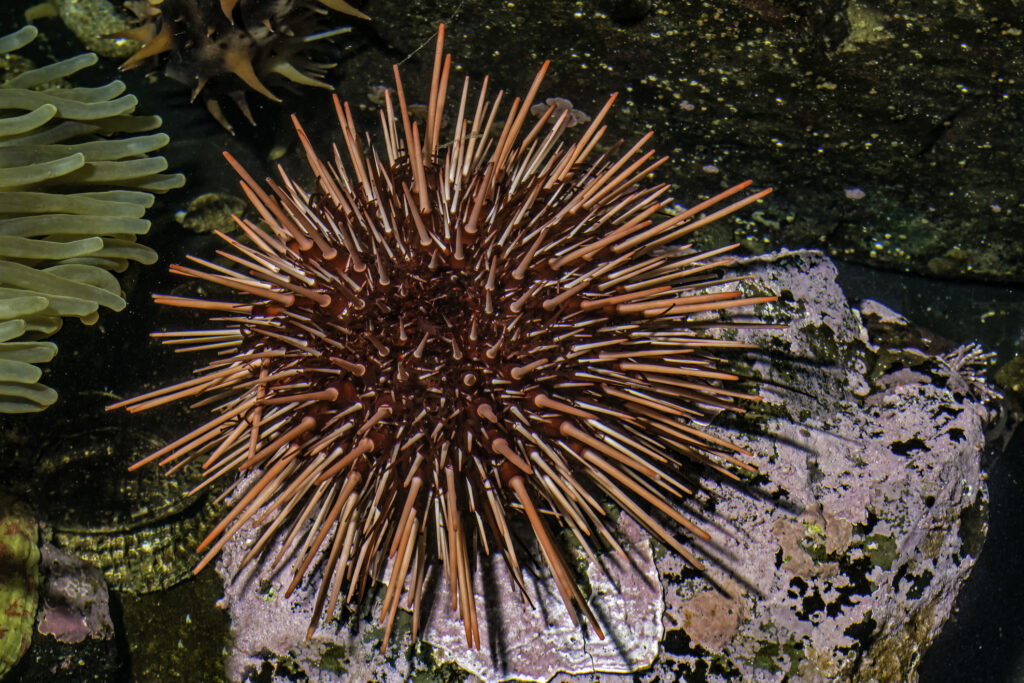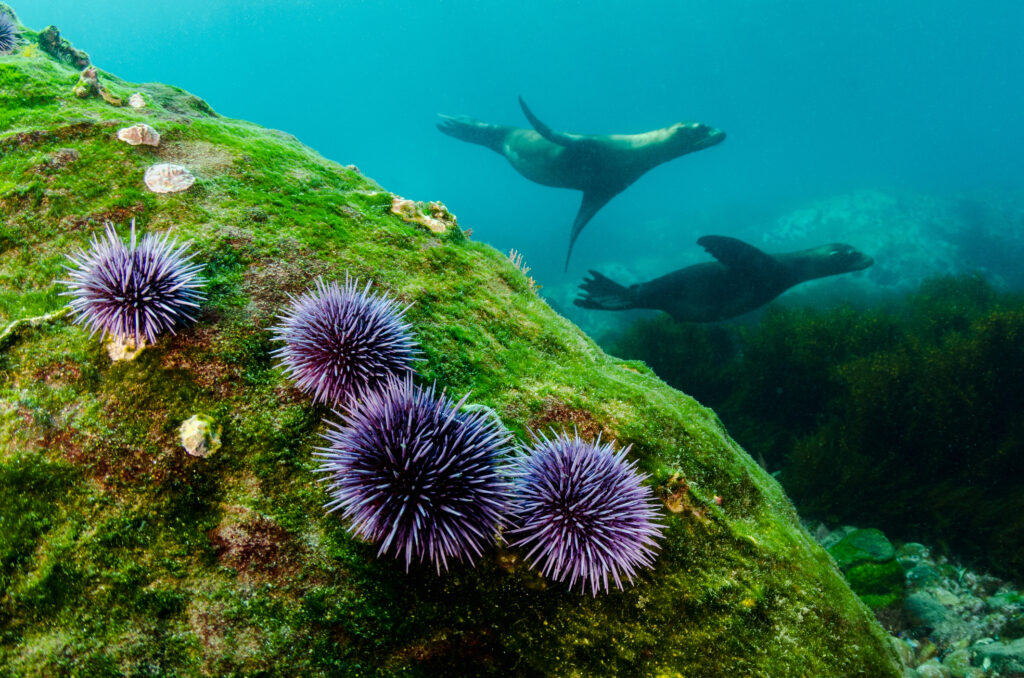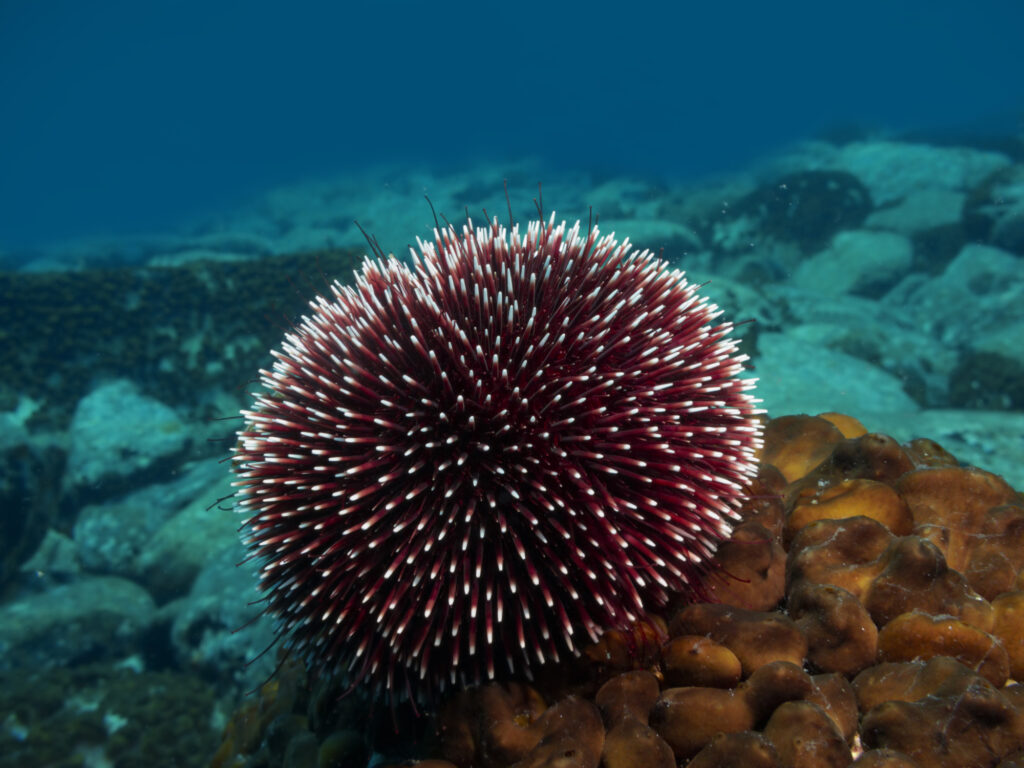The ocean is home to an incredible amount of different creatures, from the fish we all know and recognise, to some much more unique species that you might not have come across. The sea urchin is one such creature that you might not have frequently seen, or you might have even confused it with a plant.
So, if you’re hoping to learn a little more about these fascinating, spiny creatures, let’s dive straight in and understand just what is a sea urchin.
What is a sea urchin?
Sea urchins belong to a family called Echinodermata; a term that means spiny-skinned. This Phylum is also home to the likes of starfish, brittle stars and sea cucumbers. As a group, these animals are all known as echinoderms.
As they are spherical in shape and often live on the ocean floor, it’s easy to see why they might be seen as a plant, but they are in fact invertebrates. Sea urchins have been around for 450 million years, making them older than dinosaurs!
Types of sea urchins
There are just under 1,000 different species of sea urchins, each with their own individual characteristics and behaviours. For example, the Diadema sea urchin is one of the most ecologically important species as it helps to keep Caribbean coral reefs healthy.
Here at Bristol Aquarium we have our very own Diadema setosum sea urchin, also known as the long-spine sea urchin. It gets its name from its extremely long, hollow spines that can grow up to 30-40cm. Typically found in the Indo-Pacific region, its spines are mildly venomous but not fatal to humans. Interestingly, this particular species has been observed to have some of the best vision amongst sea urchins and can also rapidly invert its body and “run” on the tips of its longest spines! You can come and see this fascinating species in our Learning Lab.
The red sea urchin (Mesocentrotus franciscanus) is the largest species, which has a skeleton of around 18cm in diameter with spine lengths up to 8cm.
There are also a number of edible species of sea urchins. They are primarily used in Japanese uni sushi.

How to identify a sea urchin
Sea urchins are typically very bright in colour and are completely covered in sharp-looking spines. Fun fact: the word ‘urchin’ comes from an old word for hedgehog!
Older species have shorter, stubby spines while newer species have much spikier spines and are typically recognised as modern sea urchins.
Like other echinoderms, sea urchins have an internal skeleton that’s known as a test, which is usually a sphere shape. This is made from a type of calcium carbonate that holds the sea urchin together. These tests have five symmetrical parts around a central point, known as radial symmetry. This is also very similar to starfish.
Sea urchins can’t swim unlike other sea creatures amongst them. Instead, they have tube feet to move along the sea floor.
Habitat of a sea urchin
As they can’t swim, you’ll find sea urchins along the seabed where they typically favour corals and rocks to help them move around. They live in every ocean around the world, with some living in shallower or deeper waters depending on their species. The deepest a sea urchin has been found is 7,340 metres.
This means sea urchins live off the coast of the UK too, such as the green sea urchin (Psammechinus miliaris), which is primarily green with purple tips. The common sea urchin, which is usually pink in colour, can also be found off most coasts on the UK. If you’re lucky, you might catch a glimpse of one in a rockpool.

What do sea urchins eat?
While the main diet of a sea urchin consists of algae, they are actually omnivores. They will eat the likes of sea cucumbers, mussels and sea sponges. As sea urchins aren’t particularly agile, they have developed a method of eating that includes scraping algae into their mouth – which is on their underside.
Sea urchins have a unique chewing organ called the Aristotle’s lantern, which is made up of complex jaws and just 5 teeth that are able to sharpen themselves.
Lifespan of a sea urchin
The lifespan of a sea urchin can depend on its species, but they have been known to live anywhere between 20-200 years. For example, it used to be believed that red sea urchins lived only 7-10 years, but more recent findings show that they can actually live up to 100 years.
However, sea urchins can be very sensitive to any changes in their environment, such a change in the water’s pH and rising temperatures. In this sense, sea urchins can act as an early warning for problems in the wider ecosystem. Some species of sea urchins are considered to be in severe decline.

Are sea urchins dangerous?
Sea urchins may look a little bit scary with their spines, and it’s probably best that you steer clear of touching them! Some species have venom in their spines or in their pedicellariae, which is a defensive pincer. The flower sea urchin (Toxopneustes pileolus) is the most toxic. You’ll find this species across the Indo-West Pacific, from Okinawa in Japan to Tasmania in Australia, as well as the East African coast.
However, sea urchins are very passive and injuries usually only occur when a swimmer brushes against the spines or steps on one by accident.
So, if you’re hoping to come and catch a glimpse of some echinoderms at Bristol Aquarium, come on down to the learning lab to see our long-spined sea urchins and our Ocean Floor exhibit where you can see the common starfish! Don’t forget to book your tickets today.
